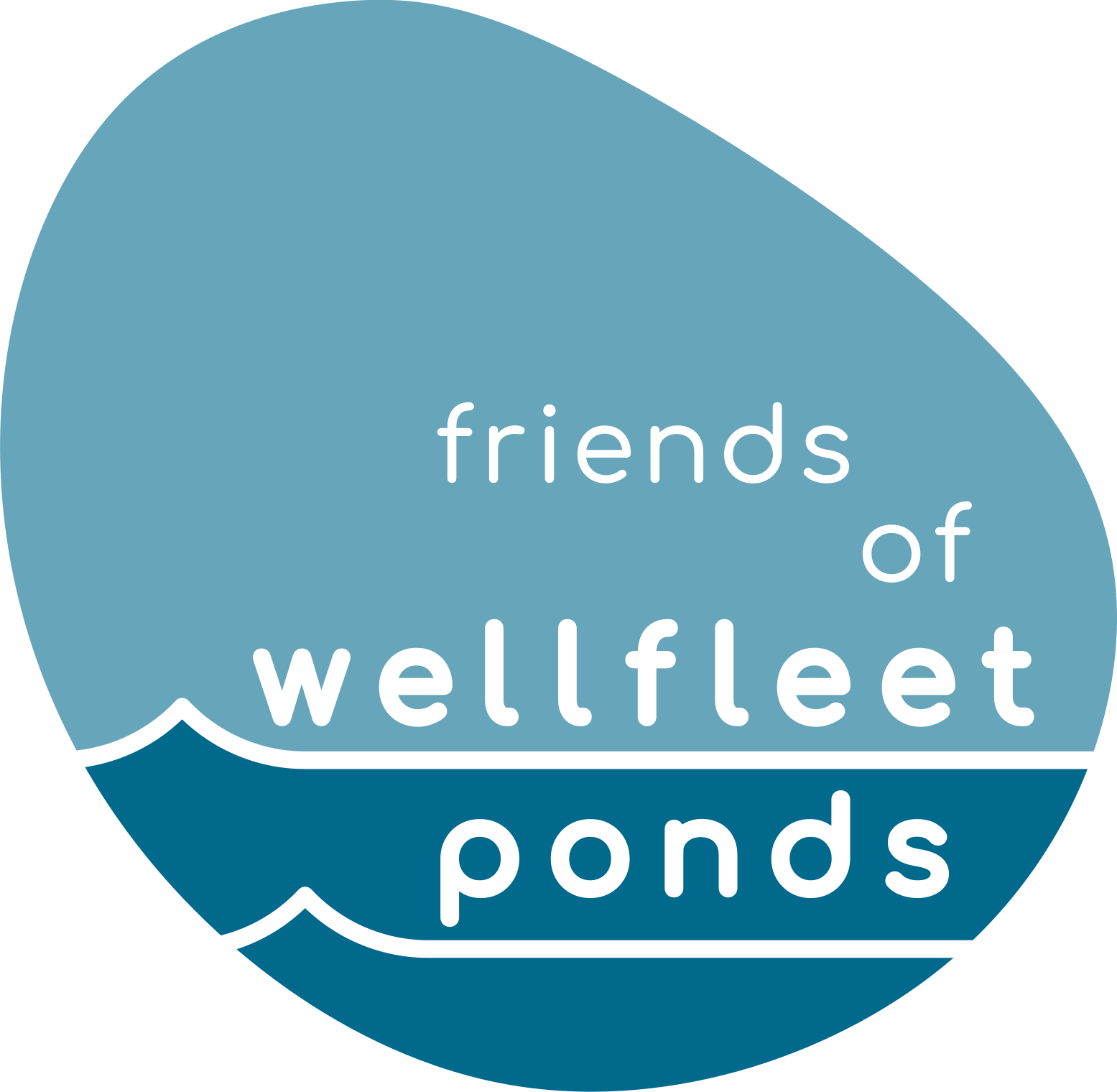Sorting out the history of the ponds’ names and how they changed, or didn’t, is one way to understand some of Wellfleet’s history. To do this we can study how their names appear, or fail to appear, on Wellfleet maps over time. This is, of course, an imperfect record, for it depends on the knowledge of the map-makers, who may, or may not, have had a personal acquaintance with the area. The maps tell us what the map makers and their informants thought worth noting. In the 17th and 18th century ponds took their names exclusively from natural features, but by the 19th century the abutting landowners names began to label the ponds, suggesting individual ownership of the ponds as a key feature.
Perhaps the earliest map of Wellfleet is dated May 1795. Prepared by an unnamed surveyor, the map lists fourteen ponds in Wellfleet. The named ponds are Eel, Perch, Gull, Long, Grass, Great, and Duck. Unnamed ponds include one in the northern part of town near a windmill, three labeled “Herring Ponds,” adjacent to Gull Pond, and a small pond adjacent to Great Pond. Two unnamed mill ponds, one at Blackfish Creek and a second at Logea / Loagy Bay, may have been man-made. All of the 18th century ponds were named for natural features, either size or shape (Long, Great), or animal or plant.
For the 19th century there are at least four maps indicating ponds: 1831, 1841, 1858, and 1893. The 1831 map, by John G. Hales, indicates Gull, one Herring Pond, Long Pond, Cohog, and five unnamed ponds. The 1841 map shows eight ponds, but none are named, although islands, rivers, and bays are labeled. By 1858 not only are more ponds identified, such as Spectacle, but for the first time there are ponds with the names of adjacent property owners, such as Hopkins and Swett’s. Interestingly, S. Dyer owns property on Hopkins Pond, which will later be known as Dyer Pond. At about this time Henry David Thoreau, who wrote about Wellfleet Ponds as well as those in Concord, recorded the names of ponds in Wellfleet and Truro. Thoreau’s informer, the unnamed “Wellfleet Oysterman,” (John Y. Newcomb), lived on Swett’s (later Williams) Pond. The oysterman mentioned Gull, Newcomb’s, Swett’s, Slough, Horse-Leech, Round, and Herring, which Thoreau described as “a chain of ponds.” Gull, Higgins, Herring, Long, Great, and Dyer, as well as five unnamed ponds, appear on the 1893 Wellfleet map. Williams pond seems to only get its name in the 20th century.
Thoreau, a careful observer of all aspects of ponds, complained in Walden about the 19th century practice of naming ponds for property owners:
“Flint’s Pond ! Such is the poverty of our nomenclature…Rather let it be named from the fishes that swim in it, the wild fowl or quadrupeds which frequent it, the wild flowers which grow by its shores, or some wild man or child the thread of whose history is interwoven with its own ; not from him who could show no title to it but the deed which a like-minded neighbour or legislature gave him, — him who thought only of its money value ; whose presence perchance cursed all the shore ; who exhausted the land around it, and would fain have exhausted the waters within it ; who regretted only that it was not English hay or cranberry meadow, — there was nothing to redeem it, forsooth, in his eyes, — and would have drained and sold it for the mud at its bottom.”
But, a hundred years later, Clare Leighton, artist and writer, offered a very different perspective on the naming of the ponds.
…I found myself understanding why so many of our ponds carry the names of the families which have lived on their shores; it does not take long for one to identify oneself with a particular pond. There is a sense of secrecy and privacy which merges into a feeling of ownership.
It must seem good to have a pond named after you–a pond or a hollow: Cahoon or Newcomb, Dyer, Baset, Sears, Higgins, Snow or Williams. This is surely the best and most benign form of immortality: to leave your mark upon map of a land.”
And Leighton is certainly correct in her conclusion: “The history of Cape Cod lies hidden behind these names.”
